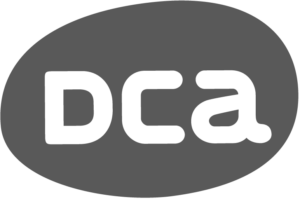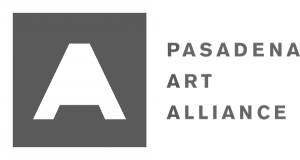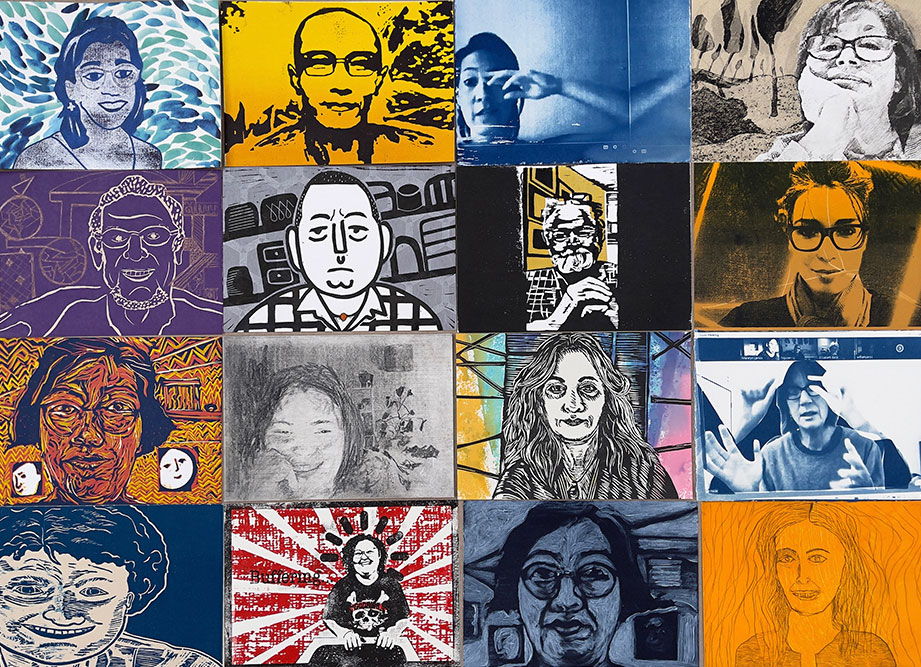
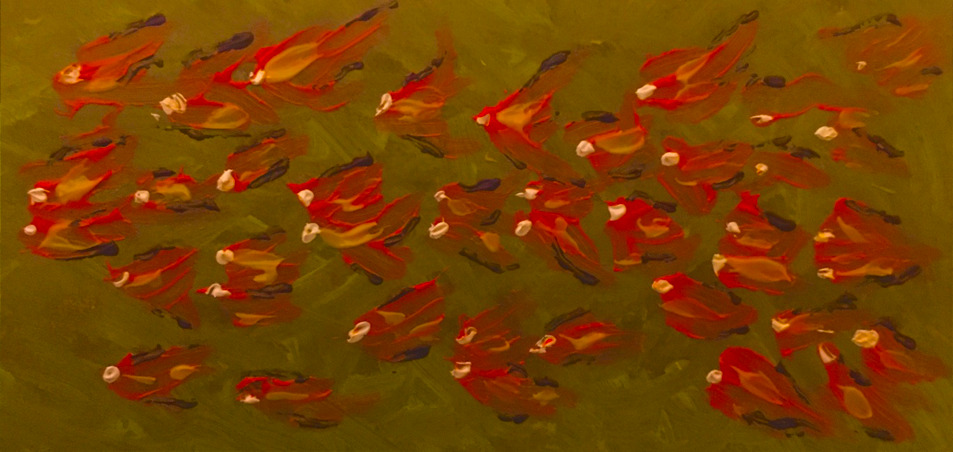
Today’s printmakers would embrace a sweeping recruitment of the richly saturated tube colors constituting the unsurpassed oil painting gamut, whereas the painters would welcome mixed-used canvas oils that exhibit painterly handling and classic permanence whether atop gessoed linen or the bare folio leaf. Here described, in answer, are methods preserving the high chroma of the beginning paint, and seeing the practitioner add the specified ingredients all to one fixed spot at the bench top, the output being an ink fit for paper surfaces, while simultaneously becoming again an oil color with a gross structure recognizable to the painting discipline. Widely served will be printmakers, painters, ateliers and labs having earlier found technically or aesthetically unsuitable the approach of altering a respected paper to curtail the oil impregnation caused by deploying, via the press or the brush, a traditional paint sought for its visual intensity.
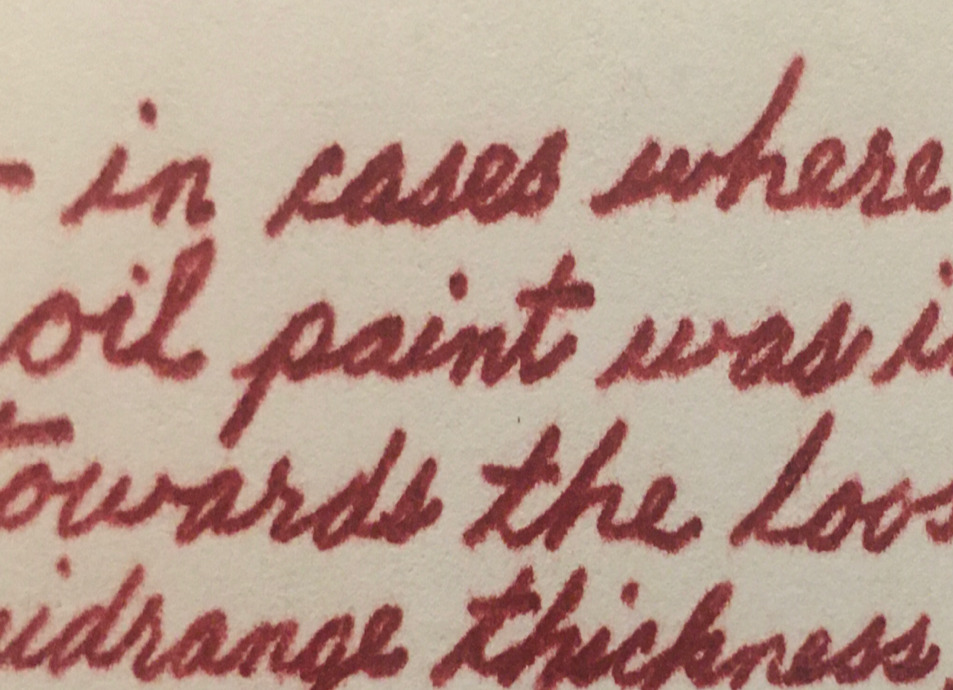
Tasks commence not unlike the opening custom of soaking up excess oil from a quantity of an unadjusted paint set out for a painting session, except that for our purposes the starting conventional paint need not have begun overbound. Rather, an oil color of middling body may be laid down in a shallow pile upon low-cost blotting paper of one- or two-sheet depth. Oil from this originally “un-thin” paint would still be allowed to sink into the paper for some hours – 4 to 7 – whereupon the color becomes underbound, for the moment. At this stage the intermediate is only ~75% – 80% oil-bound, and much decelerated in haloing and strike-through actions. “Drying poppy oil” medium at 3% – 6% of the starting volume is then mixed directly into this deliberately sunken-in pile, following which one mixes in an amount of “sun-thickened poppy oil” medium (with poppy being chosen for its exemplary color retention) bringing the pile to 105% – 110% volume, where these additions together insure even greater holdout and resistance to haloing. Our material is now left on the blotting paper for another 1.5 – 2.5 hours, and then is scooped up. We thus have, at the replenished 100% volume, the intended ink (or “ink-paint”) which, primarily because only familiar siccative oil vehicles from the painting world were engaged, also continues macrostructurally as a paint – and in cases where the input oil paint was initially well towards the looser end of midrange thickness, the output ink-paint will have been corrected in that regard.
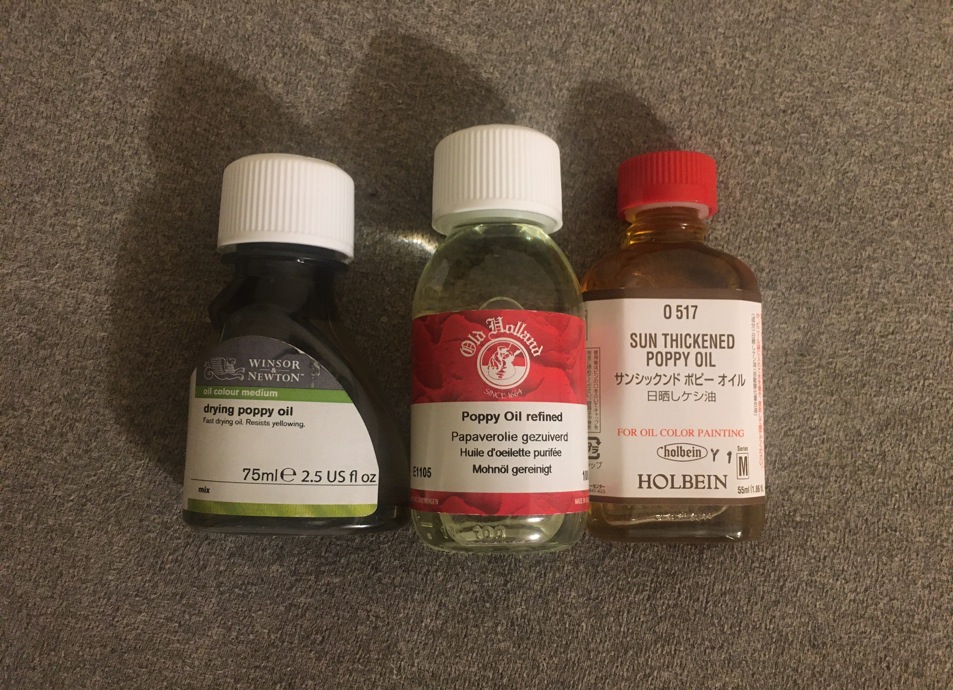
Alternatively, in a pinch – especially when processing smaller volumes of a professional color-rich paint – we may start by placing a few drops worth of “sun-thickened linseed oil”, optionally on a hard surface this time, and then mix into this 1/2 to 1 drop of “drying linseed oil”, causing the combined substance to thicken up, in no time. Next, the mixture is loosened a bit with a hint of added paint, and the small pile is then spread out to encourage hasty (12- to 45-second) re-thickening by auto-oxidation, whereupon the layer is formed back into a tiny mound, which in turn receives its smidgen of paint and is again flattened and stiffened. Given repeated cycles of piling/additions/flattening – and increasing amounts of added fresh paint (in proportion to the ever larger pile) – in just a few or several minutes the finished mound, having taken an adjusting final addition of paint, provides the needed quantity of ink-paint at the desired consistency, with the relative color strength restored to very nearly 100%. Beyond this, in refining the curing time, occasionally one may opt to incorporate a last trace of the “drying linseed oil”.
When this variation is carried out optionally atop a small blotting square, just enough of the initial drying-oil/sun-thickened blend is set down so as to cover the surface and leave over it a very shallow excess of unabsorbed oil to take the ensuing additions – which in turn are quite thoroughly mixed in, spread, and flattened with a muller at light hand pressures. And at the end, it was found that the amount of “last trace”, cure-time modulating drying oil could also be exploited in further controlling the output suspension’s consistency, which was especially noticeable if the composition was left standing for (not overlong) periods, rather than being at once collected. Interestingly, since we began already with a classic canvas paint, and progressed “backwards” from the regular uncooked vehicle, with few or no bodied amendments, towards a vehicle entirely “taken over” by a thick (binding) medium, the sequence can be aptly termed “reverse mulling”.
If “pigment-less” paint or raw binder is the input substance, the result is of course pigment-less ink (or “ink-paint”), into which the practitioner’s choice of dry pigment can be mulled. That is, sun-thickened binders, which generally are faster curing than stand oil, can be continuously expanded without sun, in room light and at room temperature, indefinitely!
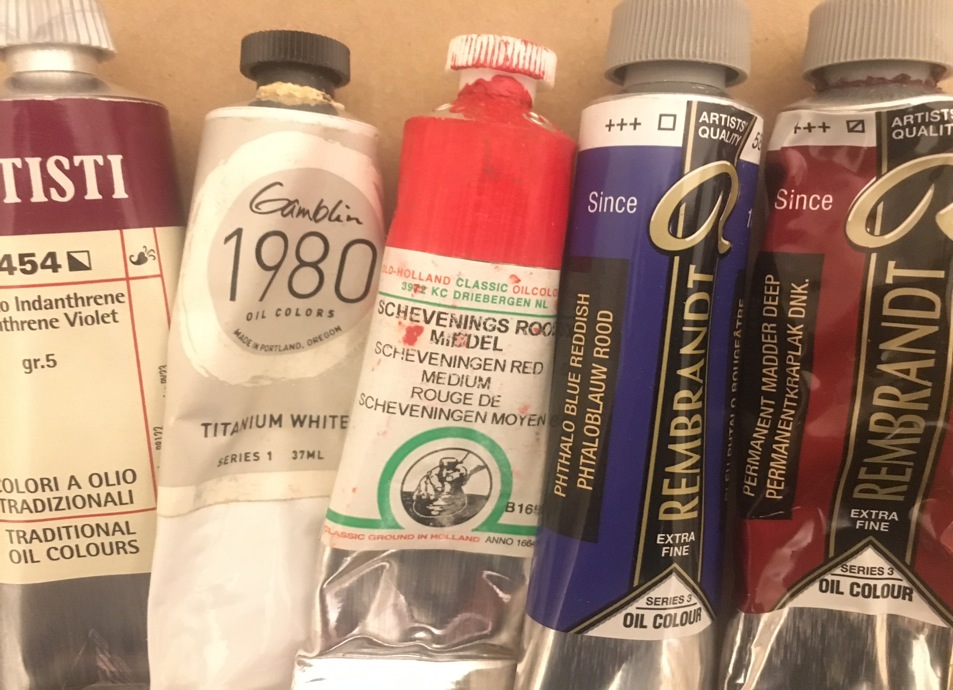
Utility of the formulations was established through blind stylus debossing the back of a transfer paper fashioned for marking the target substrate with ink. Specifically, an ink-paint color was first layered thinly across an entire face of the transfer sheet, the inked paper was placed, ink-side down, over a sheet of scrap paper on a desk pad, and then the back of a metal spoon (and sometimes just one’s palm) was employed as a baren to exert a contained hand pressure across the top of the paper/ink/paper sandwich, thus moving any loose, background-generating surplus color away to the scrap sheet. Figurations were then impressed from the transfer sheet onto a new substrate underneath by applying to this sandwich 9 lb – 10 lb of hand force with an empty ballpoint pen as the stylus, hence also leaving, on the transfer sheet’s blank side, pressure furrows plain under raking light. Assimilating the force applied, the stylus diameter of 1mm, and the metric-to-imperial conversion, the downward force per unit area is obtained from,
10 lb x 1/[(pi)(1 mm^2)/4] x(645 mm^2)/(in^2),
yielding magnitudes in the realm of tons per square inch, the levels encountered in etching, engraving, and other intaglio settings.
Success of these ink preparations was independent of the particular paper utilized: even the lighter-weight (75 gsm), acid-free office papers evinced no oil strike-through or haloing up to the oxidative hardening of the imagery. In sum, each of the discussed oil-based compositions, arising from a one-pot adaptive transformation, if pigmented qualifies dually as a saturated etching ink and colorful canvas paint, and if unpigmented is a sun-thickened type vehicle made perpetually expandable indoors sans any sunlight.
— Kyl V. Myrick (January 2024; USA)
